by Lisa Cooke | Oct 29, 2015 | 01 What's New, DNA
Over a million people have done DNA testing with 23andMe, many lured by that company’s health information tools. Learn to use their genetic genealogy tools to get 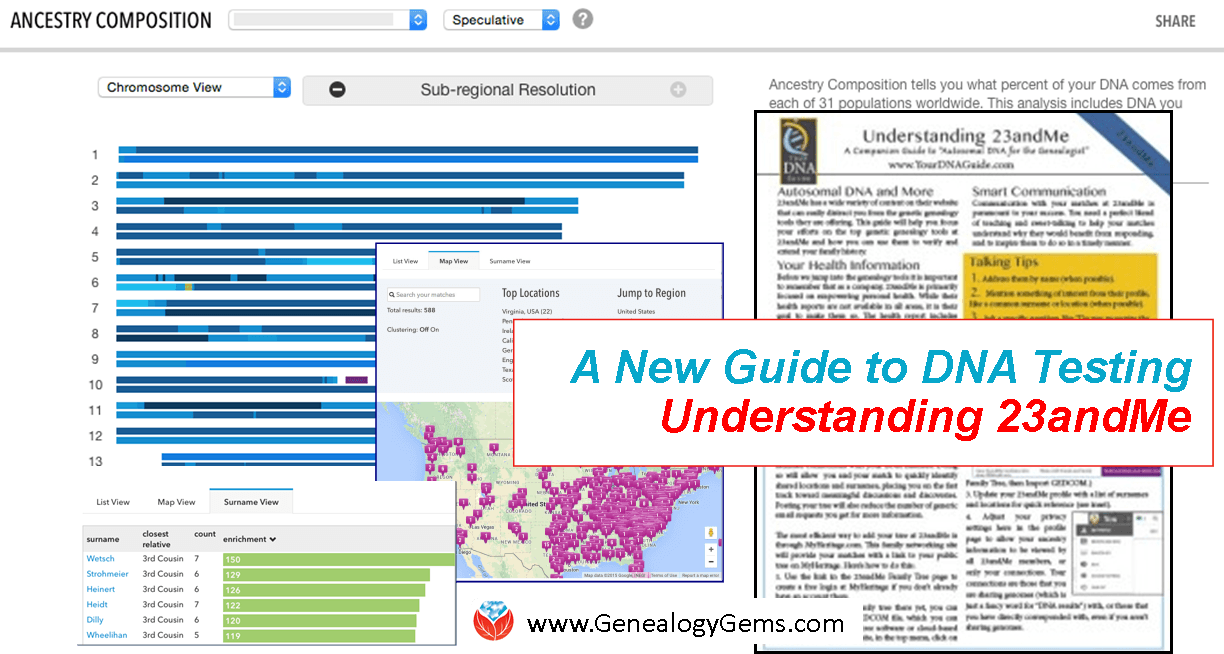 the most out of testing there! (and keep reading for a special limited time sale!)
the most out of testing there! (and keep reading for a special limited time sale!)
I am one of the million+ people who have tested my DNA with 23andMe. Early on in my days as a 23andMe customer, I spotted a match who listed ancestry from Washington state, where I grew up. Because I have had both of my parents tested, 23andMe told me that this match was on my dad’s side. I sent an inquiry out to the match and named a few of my paternal surnames as possible connections between us.
As it turns out, this match was my dad’s half first cousin! They are about the same age and had played together all the time as boys, but their families had lost touch over the years. What was even more exciting for me, is that using the tools at 23andMe I was able to see the actual physical locations on the DNA that I shared with this cousin.
Knowing that our common ancestor was Lucy J. Claunch, I knew that these actual physical, tangible pieces of me were once pieces of her. All at once I felt a discernible shift in myself and the way I viewed my connection to her. She was no longer a name on a genealogical record, she was my ancestor, and I wanted to know more. For me, it took the DNA connection to give me that added oomph to turn my genealogy into family history. As it happened, that DNA connection came through 23andMe.
How to Focus on Genealogy DNA testing with 23andMe
23andMe is primarily focused on empowering personal health. They recently announced the restored ability to provide limited health information to their customers. The wide variety of content on their website can easily distract you from the genetic genealogy tools they are offering. To help you focus on these tools and use them to verify and extend your family tree, I’ve just released a NEW laminated quick guide, Understanding 23andMe.
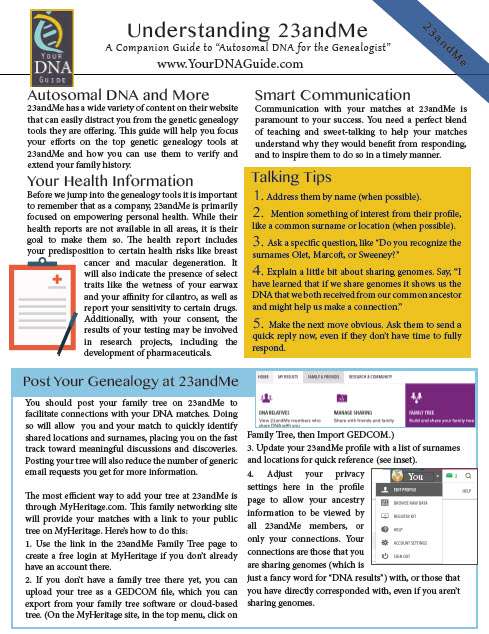 Understanding 23andMe addresses the most pressing genetic genealogy questions for those doing DNA testing with 23andMe, like:
Understanding 23andMe addresses the most pressing genetic genealogy questions for those doing DNA testing with 23andMe, like:
- How can I control how much information is being shared with others?
- How can I enter my genealogical information?
- How do I know when I have a good match?
- Is the YDNA and mtDNA information they give the same as what I see at other places?
- What is the best way to use the ethnicity results presented?
Purchase this guide NOW in the Genealogy Gems store and you’ll SAVE BIG! It’s only $5.95 right now–regularly $8.95! You’ll also save if you buy it with a super bundle of my entire series of DNA quick guides–7 of them now to help you “do your DNA” right from start to finish!
More DNA at Genealogy Gems
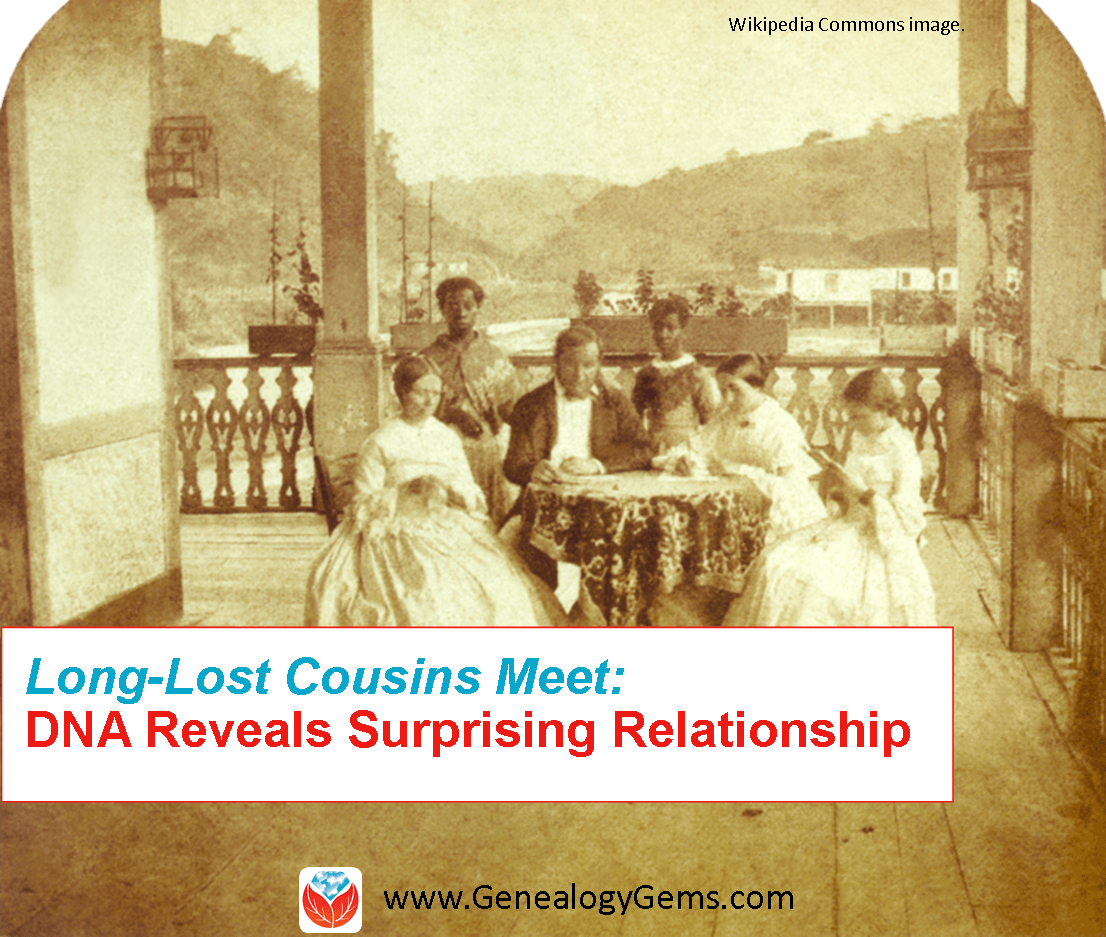
A family and its female slave house servants in Brazil, c.1860. Wikimedia Commons image. Click to view full source citation.
We’re Cousins? DNA for Genealogy Reveals Surprising Relationship
DNA Confirms Presidential Love Affair 90 Years Later
Confused by Your AncestryDNA Matches? Read This Post
by Lisa Cooke | Oct 27, 2015 | 01 What's New, German, Societies
A new international resource can help those with German roots bridge language and information gaps to find German ancestors.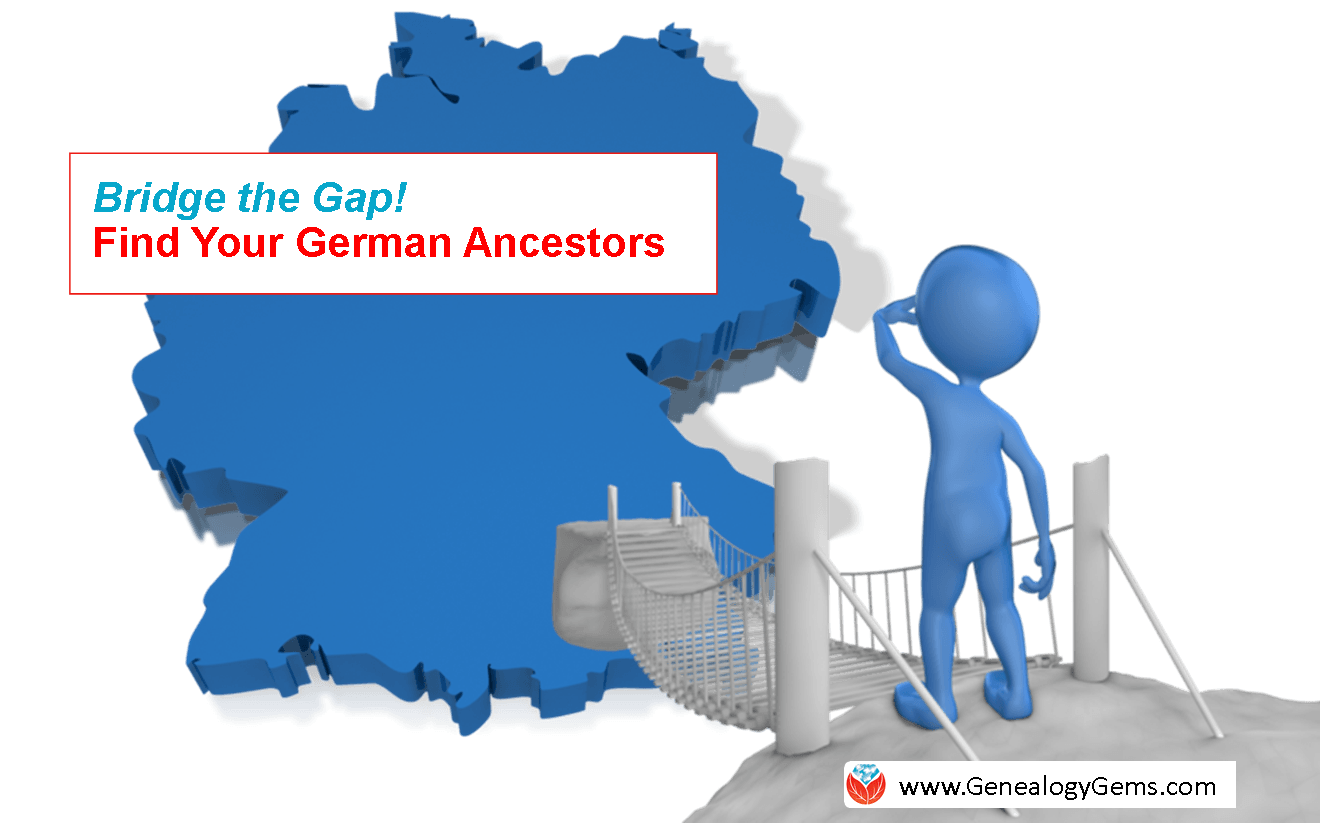
Recently I heard from Timo, a longtime Genealogy Gems fan and fellow genealogy podcaster whom I’ve met on the road before. He wrote to tell me about an exciting new international partnership to help those with German roots–wherever they live now–to reconnect with their German ancestors.
The partnership is called “Bridging the Gap between North America and Europe for Genealogists.” It’s a joint effort of the Germanic Genealogy Society, a German genealogy umbrella organization called Deutsche Arbeitsgemeinschaft genealogischer Verbände, and the Pommern Regional Group of Minnesota.
According to the partnership webpage, “This partnership forms a German-American genealogy structure between countries and organizations for sharing contacts and genealogical research. This partnership is open to all organizations interested in Germanic genealogical research.” Their plan is to develop contacts between members and organization and pool their collective knowledge of research strategies, resources, websites, guides, experts and speakers. They may eventually host conferences.
The partnership is between organizations, so to participate you’ll need to belong to one of the member societies. In addition to the founding partners listed above, several other societies have joined and others are in the process (see the partnership webpage, above). If you already belong to a society that has enough members with German roots, why not encourage your society to join the partnership?
Find German Ancestors with these Gems
German Newspapers in the U.S.: Read All About Them!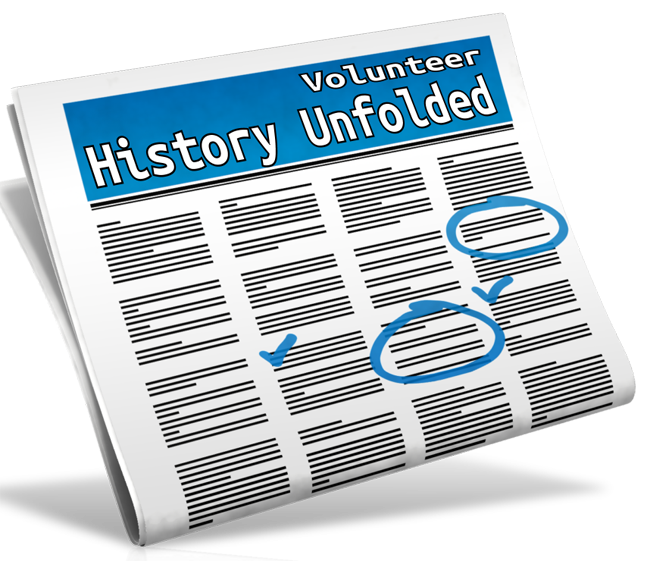
More German Genealogy Records at Ancestry.com
German Records Interview with Tamra Stansfield, AG (Genealogy Gems Premium website membership required)
by Lisa Cooke | Oct 25, 2015 | 01 What's New, Beginner, Family History Podcast, Genealogy Gems Podcast, Listeners & Readers, Mobile
Here’s how you can listen to the Genealogy Gems podcasts when you’re not online.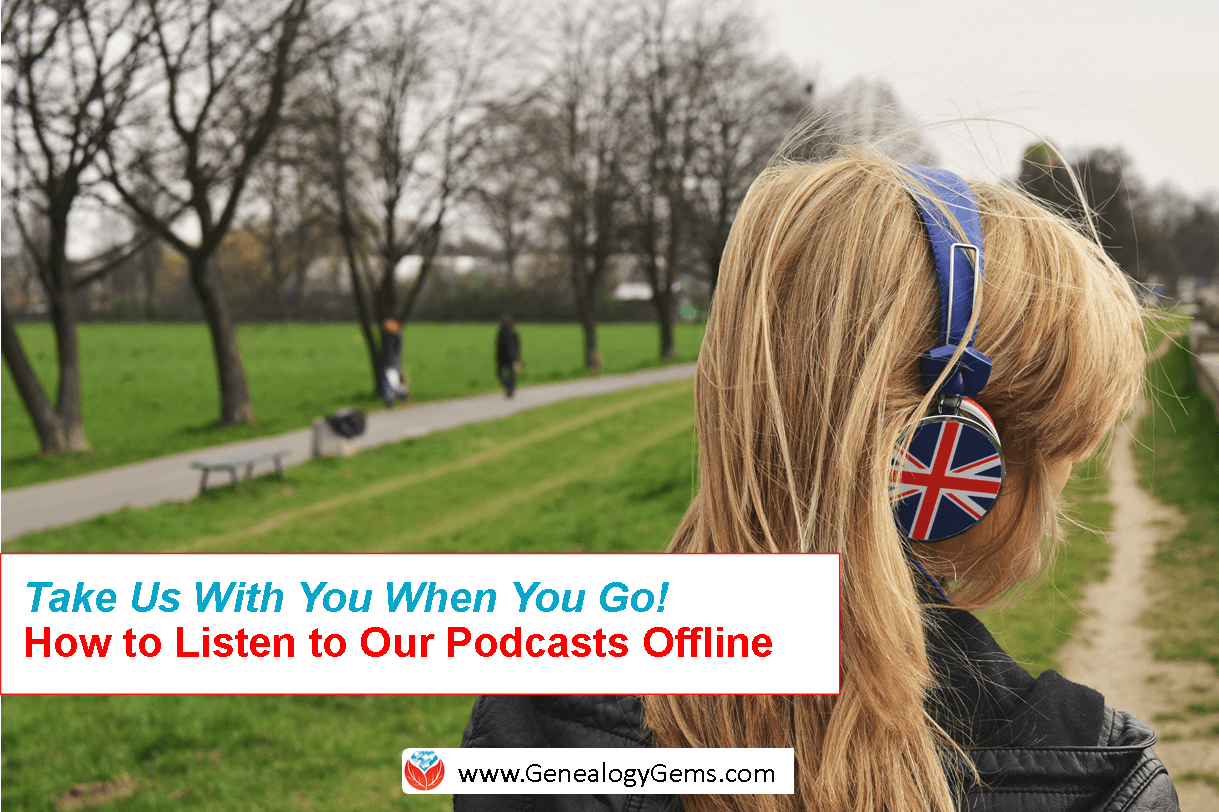
Recently Lorraine sent us this question: “Can your podcasts be downloaded to listen to offline, i.e. on a cruise where internet access isn’t practical?”
Lucky Lorraine, if she’s headed on a cruise! The answer is YES, absolutely, Lorraine (and anyone else) can listen to our podcasts at sea, while out walking or running, on a camping trip, or anywhere else we find ourselves without internet access.
Here are 3 ways to listen to the Genealogy Gems podcasts offline:
1. Genealogy Gems App: If you have a smart phone or tablet, you can get the Genealogy Gems app and easily download episodes to your phone. In the app, go to Settings and turn on the feature to automatically download starred episodes. Then just tap the Star icon for any episode you wish to download to your phone.
2. iTunes: If you don’t have a mobile device, you can use iTunes (free) to download episodes to your laptop computer or iPod/mp3 player. (Click here for more specific instructions on our Frequently Asked Questions page/)
3. Website: If you don’t wish to use iTunes: On your computer or laptop, go to www.genealogygems.com. In the menu hover your mouse over Podcasts and choose which free podcast you want to listen to: the Genealogy Gems Podcast or the Family History: Genealogy Made Easy podcast (a step-by-step show for beginners and back-to-basics). Premium Members of our Genealogy Gems website can sign in and then also hover over Premium and select Premium Podcast.
Follow the links to click the episode number you want which will take you to the show notes page.
On the show notes page for the episode, you will find the option to download the episode.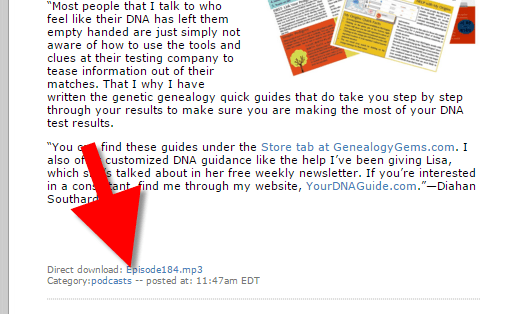
For the Genealogy Gems podcast, scroll to the bottom of the page to see the “Direct Download” link.
For Family History: Genealogy Made Easy and Genealogy Gems Premium podcasts, it’s toward the top of the page and just says “Download.”
Click to download the mp3 audio files to your computer. Enjoy on demand–wherever you are!
More Tips for Enjoying the Genealogy Gems Podcasts
5 Occasions When You Really Do Have Time to Listen to Genealogy Gems Podcasts
Here’s Why You Should Use the Genealogy Gems App
NEW to the Genealogy Gems Podcast: The Genealogy Gems Book Club
by Lisa Cooke | Oct 22, 2015 | 01 What's New, Evernote, FamilySearch, Listeners & Readers, Source Citation
Here’s how can you add family history documents you’ve grabbed with the Evernote web clipper to your tree on FamilySearch!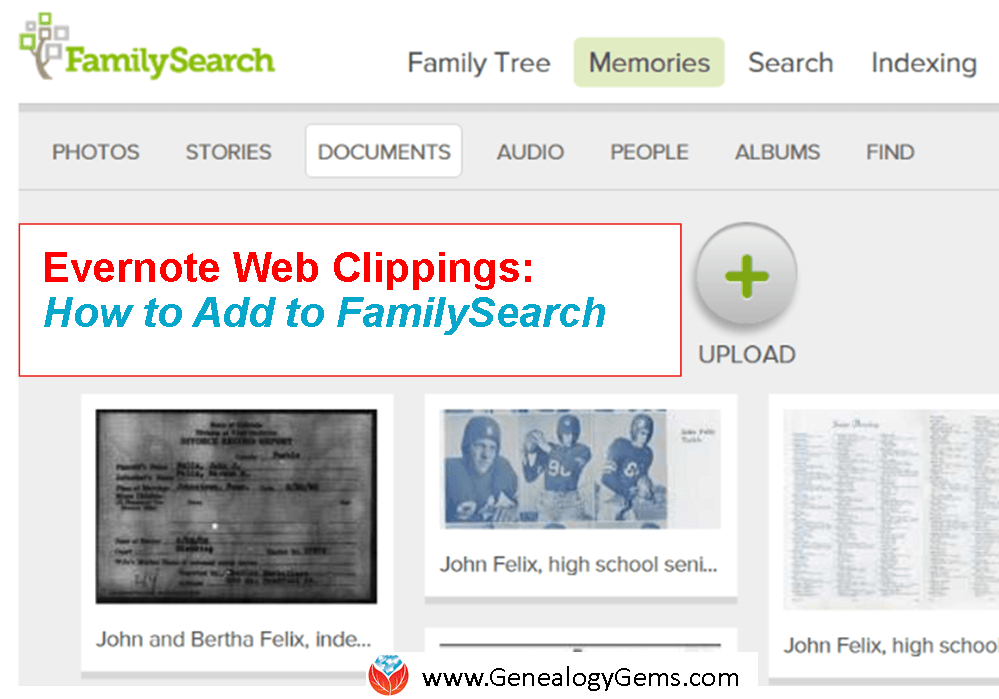
Recently Zooey wrote in with this question: “I’ve clipped numerous things for my ancestors [with the Evernote web clipper] that I want to put in FamilySearch. How do I do it under Documents?”
Good for Zooey for having her genealogy sources organized in Evernote–and for wanting to cite her sources on her FamilySearch family tree. Here’s how to do it:
FamilySearch Documents support the following file types: .pdf, .jpg, .tif, .bmp, and .png. Since it doesn’t currently have an “import from Evernote” feature, you’ll need to export the web clippings from Evernote and then upload them to FamilySearch.
Earlier this year I wrote an article on our blog entitled “Here’s a Cool Way to Export a Web Clipping from Evernote.” The article will walk you through exporting your Evernote web clippings as pdf files, which FamilySearch Documents can then accept as uploads.
More Evernote for Genealogy Tips on the Genealogy Gems Website:
You can find all our past articles on using Evernote for genealogy (including the one I mentioned) at the home page of our website. On the left, just under the main red menu, you will see a drop down menu called “Select Content by Topic.” Click the down arrow and select “Evernote” from the list. This will display all our past Evernote articles on your screen starting with the most recent. Or get started with these great how-tos:
How to Use Evernote for Genealogy: The Ultimate Education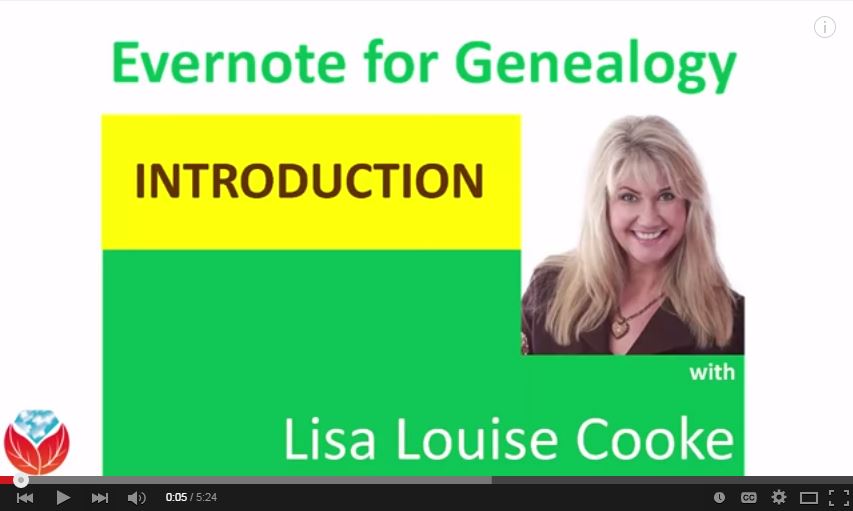
Evernote for Genealogy: What It Is, and Why You Would Use It (FREE VIDEO!)
How to Use Evernote for Genealogy and Family History: Handwriting, OCR, Video and Upload Answers (FREE VIDEO!)
 Thank you for sharing this post with others. We would all love our online trees to be better sourced–and for others’ trees to be better sourced, too.
Thank you for sharing this post with others. We would all love our online trees to be better sourced–and for others’ trees to be better sourced, too.
 the most out of testing there! (and keep reading for a special limited time sale!)
the most out of testing there! (and keep reading for a special limited time sale!) Understanding 23andMe addresses the most pressing genetic genealogy questions for those doing DNA testing with 23andMe, like:
Understanding 23andMe addresses the most pressing genetic genealogy questions for those doing DNA testing with 23andMe, like:








 Thank you for sharing this post with others. We would all love our online trees to be better sourced–and for others’ trees to be better sourced, too.
Thank you for sharing this post with others. We would all love our online trees to be better sourced–and for others’ trees to be better sourced, too.


